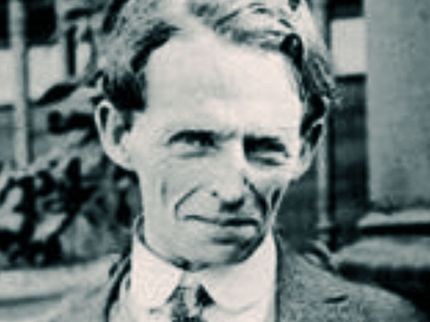In 1912, the quiet town of Villisca, Iowa was home to one of the most gruesome murders in American history. When a relative and a neighbor unlocked the door of the Moore house on the morning of June 10, they found eight corpses all bludgeoned to death with an axe. The blows were delivered so forcefully that gouges were left in the ceiling.
The victims of the Villisca axe murders were Josiah Moore, his wife Sara, their four children—the youngest just five years old—and eight-year-old Ina Mae Stillinger and her twelve-year-old sister Lena Gertrude, two neighbor girls who were friends with the Moore’s oldest daughter. All were killed in their beds. Only Lena appeared to have woken up during her attack.
Related: The VILLISCA AXE MURDERS
Eerier still is the fact that after the murders were over, the killer or killers moved through the house, carefully covering the faces of the deceased—and the mirrors in every room—with cloth.
While we know the names of the victims of the Villisca axe murders, the identity of their killer remains a mystery. In spite of a bevy of clues and a host of possible suspects no convictions were ever obtained.
Who could have committed such a grisly act? Here are the five most intriguing suspects.
Frank F. Jones

Perhaps the most surprising name linked to the brutal Villisca murders was Frank F. Jones. Jones was a respected member of the community and an Iowa State Senator. Josiah Moore had worked for Jones for several years before leaving to start his own business selling farm implements. When he did so, he reportedly took a lucrative John Deere contract with him. While that might not have been motive enough for murder, rumors also persisted that Moore had been carrying on an affair with Jones’ daughter. Though Detective Wilkerson of the Burns Detective Agency in Kansas City accused Jones of the crime, no formal charges were ever brought against the senator.
Related: ST. AUBIN STREET MASSACRE: THE BENNY EVANGELIST FAMILY MURDERS
William “Blackie” Mansfield

While Wilkerson suspected that Frank F. Jones was the dark mind behind the Villisca murders, he believed that the man who actually brought down the axe was one William “Blackie” Mansfield. Mansfield was a suspected serial killer believed to be responsible for the murder of his wife, infant child, and in-laws, as well as similar axe murders committed in Paola, Kansas just four days before the Villisca murders took place. According to Wilkerson, Mansfield was hired by Jones to execute the Moore family. The detective convinced a Grand Jury to open an investigation on Mansfield in 1916, though an alibi eventually led to Mansfield’s release. Later, Mansfield successfully sued Wilkerson and was awarded $2,225.
Henry Lee Moore

Detective Wilkerson wasn’t the only one who believed that the Villisca murders had been the work of a serial killer. In May 1913, a federal investigator declared that not only had he solved the Villisca murders, but also 22 other axe murders across the country. He laid the blame at the feet of Henry Lee Moore—no relation to Josiah Moore and his family—who had already been convicted of the murder of his mother and grandmother just a few months after the Villisca killings. Henry Lee Moore served out 36 years of a life sentence and was paroled in 1949. In spite of the claims of the federal investigator, Henry Moore was never charged with the Villisca killings or any of the other murders of which he was suspected.
Andy Sawyer

In the wake of the brutal killings, suspicion was cast upon transients and strangers who might have been passing through town at the time. One such individual was Andy Sawyer, who was reported to the sheriff by his employer as a result of his odd behavior. Sawyer was apparently very interested in the Villisca murders, and is said to have slept fully dressed while gripping the axe that he used as a worker on the Burlington Railroad. Though the town sheriff detained Sawyer, he was dismissed as a suspect when it came to light that he’d been arrested for vagrancy in Osceola, Iowa on the night of the murders.
Reverend George Kelly

The chief Villisca suspect was a traveling minister named George Kelly, who was arrested in 1917 after years of sending inquiring letters about the murders to police and family members of the victims. Kelly had previously been arrested for sending obscene material through the mail, and had been held in a mental hospital in Washington, D.C. After his arrest, Kelly made a full confession to the Villisca slayings. However, the confession came after hours of interrogation, and he recanted almost immediately. His first trial ended in a hung jury, while the second resulted in an acquittal.
***
Investigators continued to receive confessions in the years after the killings, including one from a prisoner in 1931 Detroit, who claimed that an unknown businessman had offered to pay him $5,000 to kill the Moore family. Ultimately, each clue and confession led to dead ends.
Today, the Villisca Axe Murder house is open to the public for both daytime tours and overnight stays. Visitors can now explore the scene of the crime, and experience first-hand the enduring mystery at the heart of the slayings.
Special thanks to Kelly Rundle and Fourth Wall Films for allowing us to feature their historical photos. Check out Fourth Wall’s fascinating documentary on the murder case, VILLISCA: LIVING WITH A MYSTERY.
Photo of Henry Lee Moore: Wikimedia Commons; Photo of Frank F. Jones via Iowa Legislature; Photo of William Mansfield via Villisca: Living with a Mystery; Photo of Villisca House via Iowa Legislature; Photo of Reverend George Kelly via Villisca: Living with a Mystery
